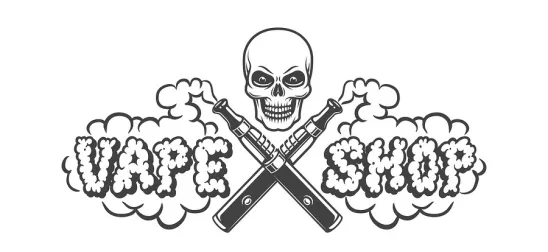We have observed two recent enforcement trends at the Consumer Product Safety Commission (CPSC) that may affect the e-vapor industry: (1) a spike in recalls of products harmful or fatal to children if ingested but lacking required child-resistant packaging; and (2) an increased focus on the absence of certificates of compliance. Both forms of regulatory violations were also the subject of a recent Nicotine Packaging Advisory Letter from the Director of CPSC’s Office of Compliance and Field Operations. Companies that bottle and sell liquid nicotine for use in open-system e-vaping devices should therefore ensure that their containers are fitted with compliant child-resistant closures if required, and that they create, furnish, and keep on file accurate and updated General Certificates of Conformity (GCCs) evincing compliance. Failure to do so could result in detention and destruction of shipments or products stored in warehouses, recalls from distribution, and consumer-level recalls, and could put companies at risk of civil penalties for violations. We advise many clients on child-resistant packaging and related obligations. Given scrutiny of the e-vapor industry by multiple federal agencies, it is especially important for industry members to pay close attention to CPSC requirements as well as obligations under laws administered by other agencies.
Child Resistant Closures
As we previously reported, the Child Nicotine Poison Prevention Act of 2015 (CNPPA) requires that “liquid nicotine containers,” which are defined as containers “from which nicotine is accessible through normal and foreseeable use by a consumer,” be packaged in child-resistant packaging. Pods and similar containers that are designed for use in closed-system electronic vaping devices do not need child-resistant packaging if consumers will not come into contact with the nicotine “through customary or reasonably foreseeable handling or use, including reasonably foreseeable ingestion or other contact by children.” The requirements for child-resistant packaging are found in CPSC’s regulations implementing the Poison Prevention Packaging Act (PPPA) and are specifically cited in the CNPPA. The packaging must be difficult for children to open (80% of children should be unable to open the packaging after 10 minutes of trying), but should also be easy for older adults to open (90% of adults must be able to open it). See 16 CFR § 1700.15. CPSC regulations set out the testing protocol, which includes panels of at least 50 children and 100 adults aged 50-70. 16 CFR § 1700.20.
CPSC’s recent Nicotine Packaging Advisory Letter cautions companies that child resistant closures may apply to dispensing caps that come with the products. Notably, the Advisory Letter stresses that if the dispensing cap or other secondary closure sold with the product is reasonably expected to replace the original child resistant closure, it must also be child resistant. This appears to be a new area of concern for CPSC with respect to liquid nicotine, as it was not mentioned in CPSC’s June 7, 2016 Nicotine Packaging Surveillance letter. Companies should therefore expect enhanced CPSC enforcement focus on products sold with secondary caps.
CPSC is not the only agency concerned about the possibility that children could be poisoned by liquid nicotine if they accidentally ingest it. In May of this year, the Food and Drug Administration (FDA) together with the Federal Trade Commission (FTC) issued 13 warnings letters to e-liquid companies that sold liquid nicotine in packages resembling soft drinks, candy, or other foods appealing to children. The letters alleged that these products were misbranded in violation of the Food, Drug and Cosmetics Act and that the labeling was unfair or deceptive in violation of the FTC Act. In the letters, the agencies states that “children are at particular risk because exposure to the nicotine in the e-liquid product, even in relatively small amounts, could result in acute toxicity. Child poisonings due to the ingestion of liquid nicotine have recently increased substantially. Severe harms can occur in small children from ingestion of liquid nicotine, including death from cardiac arrest, as well as seizure, coma, and respiratory arrest.” FTC staffers also highlighted use of child-appealing characters and themes by e-cigarette companies in packaging and advertising at a recent National Advertising Division (NAD) advertising conference, stressing that the practice was unfair and deceptive, and that ingesting nicotine could be fatal to children.
Separately, the CPSC appears to have increased its targeted enforcement of child-resistant packaging requirements for other product categories. CPSC announced six consumer-level recalls of products that did not have mandatory child-resistant packaging over the last twelve months. This is a sharp increase in such recalls, as there had been only twenty-two between 1992 and late 2017. Companies that recalled products lacking child-resistant packaging generally provided consumers a refund, a new product, or a replacement child-resistant cap. They also reworked packaging for new products to add child-resistant cap. Be advised that it takes time to source appropriate child-resistant closures that are technically suitable for the package, can be implemented on existing product packaging lines, and meet cost considerations. Additionally, because child-resistant packaging requirements are enshrined in mandatory regulations, firms that learn of a failure to comply must of course consider their obligation to file a report to CPSC under Section 15(b) of the Consumer Product Safety Act (CPSA). We advise companies that determine that their existing product packaging fails to meet child-resistant requirements to begin the search for alternative packaging or closures at the same time they prepare their reports to the CPSC.
General Certificates of Conformity
Because containers of liquid nicotine are subject to a mandatory CPSC regulation, manufacturers must also create GCCs for their products. GCCs must accompany a product shipment, which can be done either as a hard copy or as a link to a URL where the retailer, or the CPSC if it requests one, can find an electronic copy. CPSC’s recent Nicotine Packaging Advisory Letter specifically reiterated the requirement to issue GCCs. GCCs must include certain specific information. As it is not always straightforward to create these records, we outline the requirements below with some tips on compliance:
1. Identification of the product covered by the certificate.
- This would include the brand name, size, SKU and similar information.
2. Citation to each CPSC product safety regulation or statutory requirement to which the product is being certified.
- The relevant citation is 16 CFR § 1700.15.
3. Identification of the importer or domestic manufacturer or private labeler certifying compliance of the product, including the importer or domestic manufacturer’s name, full mailing address, and telephone number.
- The manufacturer listed is the company that filled the bottle, or the private labeler, e., the company named on the label in the case of product that was filled by a supplier that is not named on the label.
- The manufacturer of the child-resistant packaging is not the manufacturer of the e-liquid and should be listed here.
4. Contact information for the individual maintaining records of test results, including the custodian’s name, e-mail address, full mailing address, and telephone number.
- The manufacturer responsible for creating the GCC must designate a responsible individual and provide this information.
5. Date (month and year at a minimum) and place (including city and state, country, or administrative region) where the product was manufactured.
- The date and place where the e-liquid was filled should be provided.
6. Date and place (including city and state, country or administrative region) where the product was tested for compliance with the applicable regulation(s).
- This would be the date and location of testing for compliance with child-resistant packaging requirements.
- If the e-liquid manufacturer or private labeler has relied on a GCC from the supplier of the container rather than conducting its own tests, list the date of the certificate provided by the packaging suppliers.
7. Identification of any third-party laboratory on whose testing the certificate depends, including name, full mailing address and telephone number of the laboratory (to the extent this is relevant).
- If the e-liquid manufacturer or private labeler has relied on a GCC from the supplier of the container, the response is “N/A” but the underlying GCC should be attached to the e-liquid manufacturer’s GCC.
CPSC has dramatically increased its enforcement for violations of “paperwork” requirements, including certificate of compliance and tracking labels for children’s products, at the port over the last year. CPSC is on pace to issue more Letters of Advice (LOA) for such violations than in any year since 2012, the earliest year for which data are available. CPSC’s Office of Import Surveillance also recently released a report on a study it conducted that found a high correlation between the lack of certificates and additional regulatory violations. If CPSC requests a GCC and one is not furnished within 24 hours, it is highly likely that the shipment will be detained and subjected to additional scrutiny by the agency. Companies should, therefore, make sure that they create full and accurate GCCs and that they appropriately provide them to their retailers. Companies should also maintain their GCCs in a readily accessible electronic file so that they can be quickly accessed and sent to CPSC upon request.
Conclusion
In an era of heightened attention to the potential harm to minors stemming from e-vaping, sellers of liquid nicotine should diligently comply with child-resistant packaging requirements and should carefully document their compliance with GCCs. Failure to meet these requirements could lead to consumer-level recalls and destruction of all existing non-compliant product in the supply chain. Companies with noncompliant products that want to avoid a prolonged absence from the market will have to quickly secure appropriate packaging, which may be expensive and difficult to integrate with existing production lines. Additionally, failure to use required child-resistant closures may give rise to reporting obligations to the CPSC, and failure to report could lead to enforcement actions and potentially millions of dollars in penalties.
The e-vapor industry is facing scrutiny from multiple federal agencies on multiple fronts. It is essential that industry members understand and adhere to all applicable regulatory requirements.





 />i
/>i
